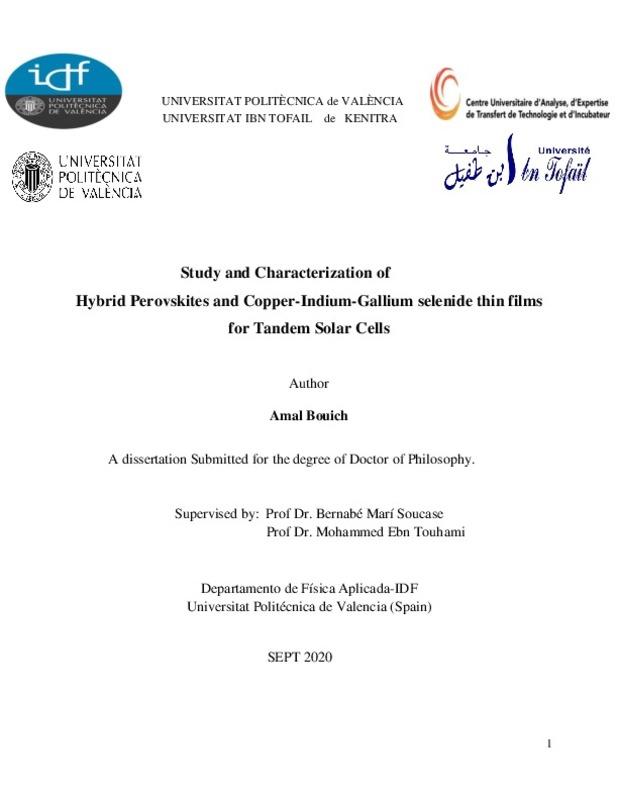JavaScript is disabled for your browser. Some features of this site may not work without it.
Buscar en RiuNet
Listar
Mi cuenta
Estadísticas
Ayuda RiuNet
Admin. UPV
Development of a GIS-Method to Determine Solar Feed-In Time SeriesAnd Solar Potential
Mostrar el registro sencillo del ítem
Ficheros en el ítem
| dc.contributor.advisor | Bracho León, Gabriela Cristina
|
es_ES |
| dc.contributor.advisor | Lambert, Jerry
|
es_ES |
| dc.contributor.advisor | Spliethoff, Hartmut
|
es_ES |
| dc.contributor.author | Guerra Gil, Irene
|
es_ES |
| dc.date.accessioned | 2022-11-03T08:29:33Z | |
| dc.date.available | 2022-11-03T08:29:33Z | |
| dc.date.created | 2022-09-20 | |
| dc.date.issued | 2022-11-03 | es_ES |
| dc.identifier.uri | http://hdl.handle.net/10251/189040 | |
| dc.description.abstract | [ES] El objetivo de este proyecto es desarrollar un SIG (Sistema de Información Geográfica) para averiguar cuánta electricidad puede generarse con paneles solares fotovoltaicos integrados en edificios para el estado federal de Baviera, el cual se utiliza como zona de observación ejemplar (con la posibilidad de ampliarla a toda Alemania). El potencial de generación de electricidad de Baviera se exportará y calculará a partir de los datos ya existentes. La base de datos "3DCityDatabase", una base de datos pública y gratuita que contiene información sobre todos los edificios de Alemania, se utilizará para extraer información sobre la superficie de los tejados, la inclinación y la orientación de los tejados de toda Alemania. Otros parámetros como la irradiación solar se procederán a introducir en el modelo para obtener el potencial solar de Baviera. Una vez obtenido el potencial de generación de electricidad (en kWh), se obtendrá una serie temporal de alimentación para sistemas fotovoltaicos de autoconsumo (kW) que será la exportación final del proyecto. Todo el método se validará con simulaciones de sistemas energéticos utilizando Python y PostgreSQL. | es_ES |
| dc.description.abstract | [EN] This thesis intends to calculate the solar energy potential of the Federal State of Bavaria for photovoltaic systems installed in building’s rooftops. Bavaria, with a total surface area of 70.550 km2 , is the region in Germany with the highest solar energy potential. In this thesis, a methodology is developed to calculate the solar potential by using the data from the 3D City Database, a database that contains information on all buildings of many countries of the world, including Germany. The methodology involves firstly the extraction of relevant parameters from the 3D City Database. The rooftop area, azimuth angle and inclination for all buildings present in Bavaria is obtained. Secondly, the useful roof surface area where photovoltaic arrays can be installed, as well as the total possible number of PV modules per rooftop is calculated. These parameters are obtained using the technical characteristics from a chosen PV module and correction coefficients from past literature. In the next phase of the study, the irradiation data from the German Meteorological Services for the year 2019 is introduced in the model. The results of the thesis include the solar potential in GWp, the distribution of the possible number of PV modules with respect to the different rooftop inclinations and orientations in Bavaria and an electricity generation time series for 2019. The time series portrays the hourly electricity generation capacity factors achievable with building-integrated photovoltaic systems for each Government District in Bavaria. These results represent the solar potential of the Federal State of Bavaria | es_ES |
| dc.format.extent | 138 | es_ES |
| dc.language | Inglés | es_ES |
| dc.publisher | Universitat Politècnica de València | es_ES |
| dc.rights | Reserva de todos los derechos | es_ES |
| dc.subject | Energía solar fotovoltaica | es_ES |
| dc.subject | Sistema de Información Geográfico | es_ES |
| dc.subject | Potencial solar | es_ES |
| dc.subject | Simulación energética | es_ES |
| dc.subject | Python | es_ES |
| dc.subject | PostgreSQL | es_ES |
| dc.subject | Photovoltaic solar energy | es_ES |
| dc.subject | Geographic Information System | es_ES |
| dc.subject | Solar potential | es_ES |
| dc.subject | Energy system simulation | es_ES |
| dc.subject | Building-Integrated Photovoltaic Systems | es_ES |
| dc.subject | Geographical Information System | es_ES |
| dc.subject | Electricity Generation Time Series | es_ES |
| dc.subject | Full Load Hours | es_ES |
| dc.subject.classification | MAQUINAS Y MOTORES TERMICOS | es_ES |
| dc.subject.other | Máster Universitario en Ingeniería Industrial-Màster Universitari en Enginyeria Industrial | es_ES |
| dc.title | Development of a GIS-Method to Determine Solar Feed-In Time SeriesAnd Solar Potential | es_ES |
| dc.title.alternative | Desarrollo de un método SIG para determinar las series temporales de alimentación solar y el potencial solar | es_ES |
| dc.title.alternative | Desenvolupament d'un mètode SIG per a determinar les sèries temporals d'alimentació solar i el potencial solar | es_ES |
| dc.type | Tesis de máster | es_ES |
| dc.rights.accessRights | Cerrado | es_ES |
| dc.contributor.affiliation | Universitat Politècnica de València. Departamento de Máquinas y Motores Térmicos - Departament de Màquines i Motors Tèrmics | es_ES |
| dc.contributor.affiliation | Universitat Politècnica de València. Escuela Técnica Superior de Ingenieros Industriales - Escola Tècnica Superior d'Enginyers Industrials | es_ES |
| dc.description.bibliographicCitation | Guerra Gil, I. (2022). Development of a GIS-Method to Determine Solar Feed-In Time SeriesAnd Solar Potential. Universitat Politècnica de València. http://hdl.handle.net/10251/189040 | es_ES |
| dc.description.accrualMethod | TFGM | es_ES |
| dc.relation.pasarela | TFGM\148928 | es_ES |
Este ítem aparece en la(s) siguiente(s) colección(ones)
-
ETSII - Trabajos académicos [10404]
Escuela Técnica Superior de Ingenieros Industriales




![[Cerrado]](/themes/UPV/images/candado.png)


